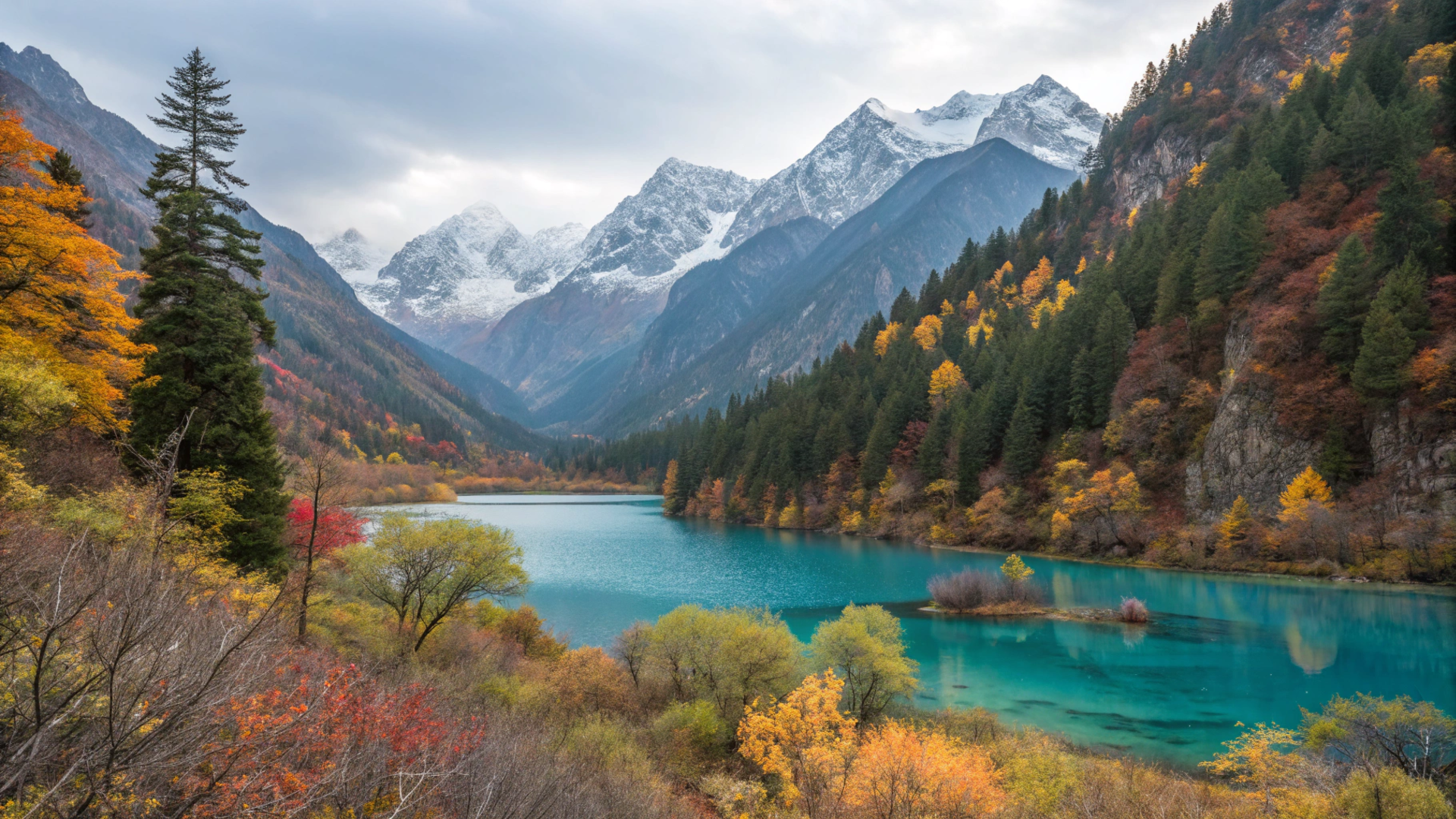Asia, the largest and most diverse continent, is a treasure trove of natural wonders. From lush rainforests and towering mountains to pristine beaches and unique wildlife, Asia’s national parks offer something for every nature lover.
As someone who has wandered through these breathtaking landscapes, I can confidently say that these parks are not just destinations—they are experiences that stay with you forever.
In this article, I’ll take you on a journey through 12 of the best national parks in Asia, sharing personal stories, practical tips, and insider secrets to help you plan your adventure.
Whether you’re a seasoned traveler or a first-time explorer, these parks will leave you in awe of nature’s grandeur.
1. Jiuzhaigou Valley National Park, China
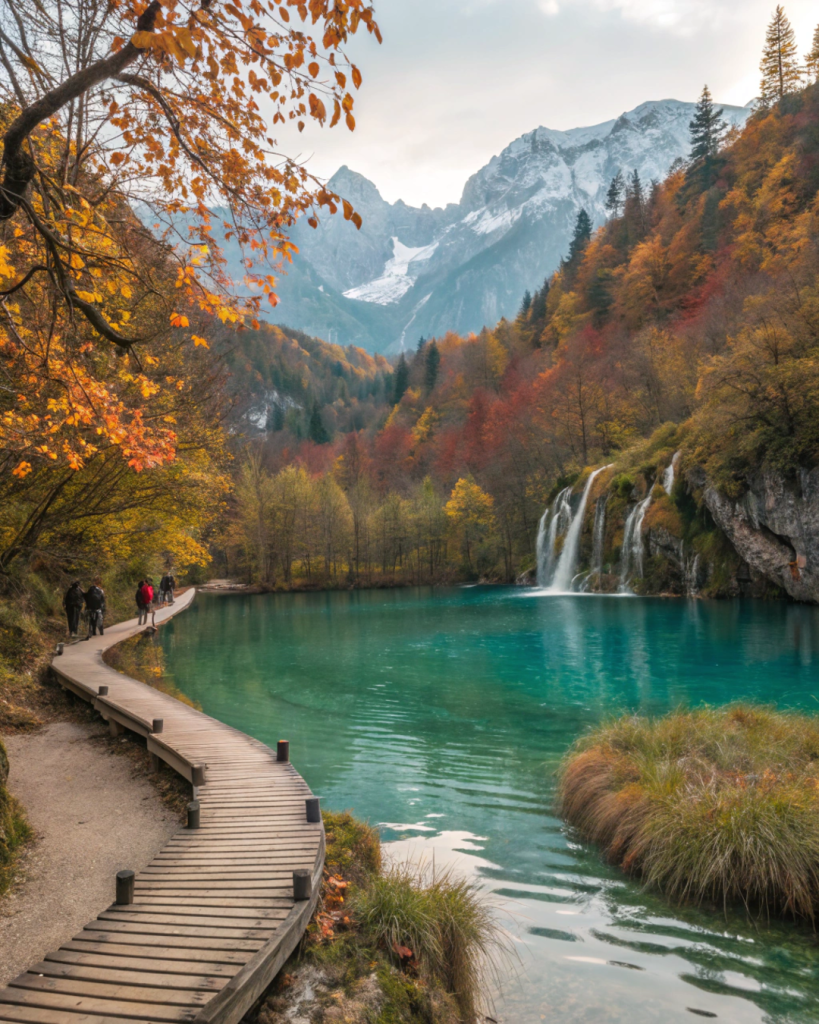
A Kaleidoscope of Colors
I’ll never forget the first time I saw the turquoise lakes of Jiuzhaigou Valley. Nestled in the Sichuan Province, this UNESCO World Heritage Site is a dreamlike landscape of crystal-clear lakes, cascading waterfalls, and snow-capped peaks.
The park’s name, Jiuzhaigou (九寨沟), translates to “Valley of Nine Villages,” and its beauty is as poetic as its name.
Essential Visitor Information
- When to Visit: Autumn (September to November) is the best time to witness the vibrant fall foliage. Spring (April to June) is also lovely, with blooming flowers and milder weather.
- Getting There: Fly to Chengdu, then take a 8-10 hour bus ride or a short flight to Jiuzhaigou Huanglong Airport.
- Costs: Entry fee is ¥169 (approx. 25)duringthelowseasonand¥259(approx.25)duringthelowseasonand¥259(approx.38) during the high season.
- Where to Stay: Stay in Zhangzha Town, just outside the park. Options range from budget hostels to luxury resorts.
- Must-See Places: Five Flower Lake, Nuorilang Waterfall, and Long Lake.
- Food Recommendations: Try Tibetan butter tea and yak meat dishes at local restaurants.
- Local Tips: Arrive early to avoid crowds, and wear comfortable shoes for walking.
2. Komodo National Park, Indonesia
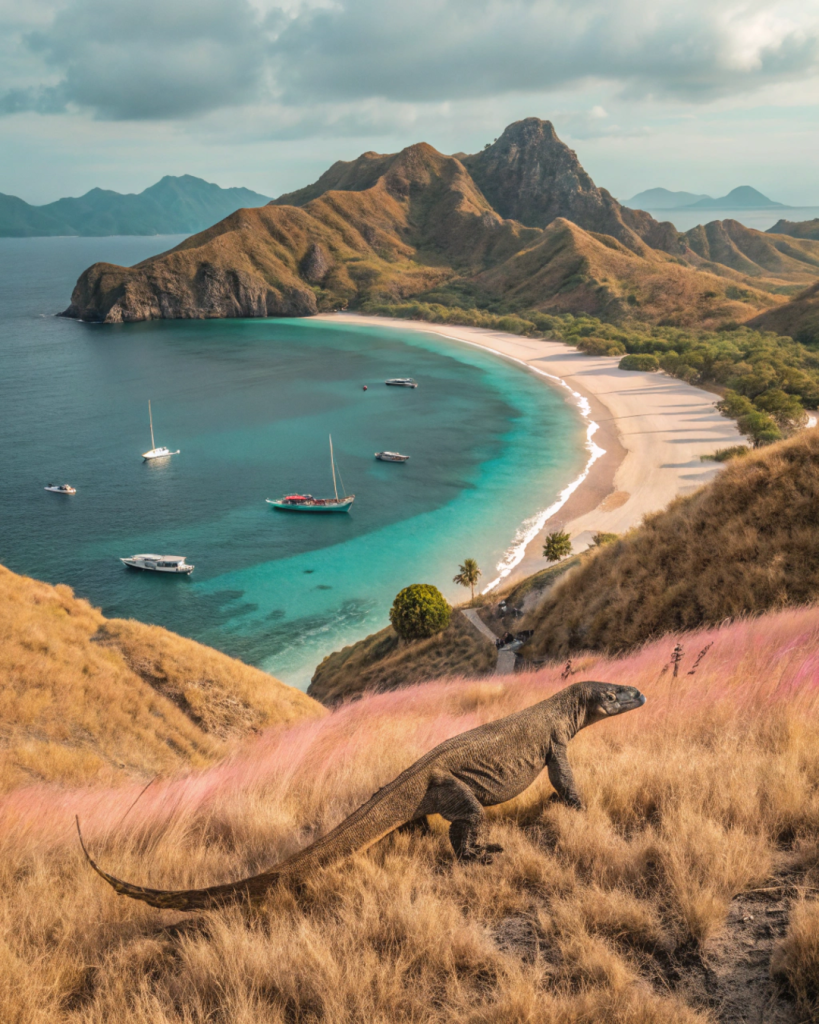
Where Dragons Roam
Komodo National Park is one of those places that feels like it’s straight out of a fantasy novel. Home to the famous Komodo dragons, this park is a haven for wildlife enthusiasts and adventure seekers.
I still remember the thrill of seeing a Komodo dragon up close—its prehistoric appearance and sheer size were both awe-inspiring and slightly terrifying.
Essential Visitor Information
- When to Visit: April to December for dry weather and better visibility for diving.
- Getting There: Fly to Labuan Bajo on Flores Island, then take a boat to the park.
- Costs: Park entry fee is IDR 150,000 (approx. 10)onweekdaysandIDR225,000(approx.10)onweekdaysandIDR225,000(approx.15) on weekends.
- Where to Stay: Labuan Bajo offers a range of accommodations, from budget homestays to luxury resorts.
- Must-See Places: Padar Island, Pink Beach, and Komodo Island.
- Food Recommendations: Fresh seafood is a must-try. Don’t miss the grilled fish at local warungs (small eateries).
- Local Tips: Hire a local guide for safety and to learn more about the park’s ecosystem.
3. Chitwan National Park, Nepal
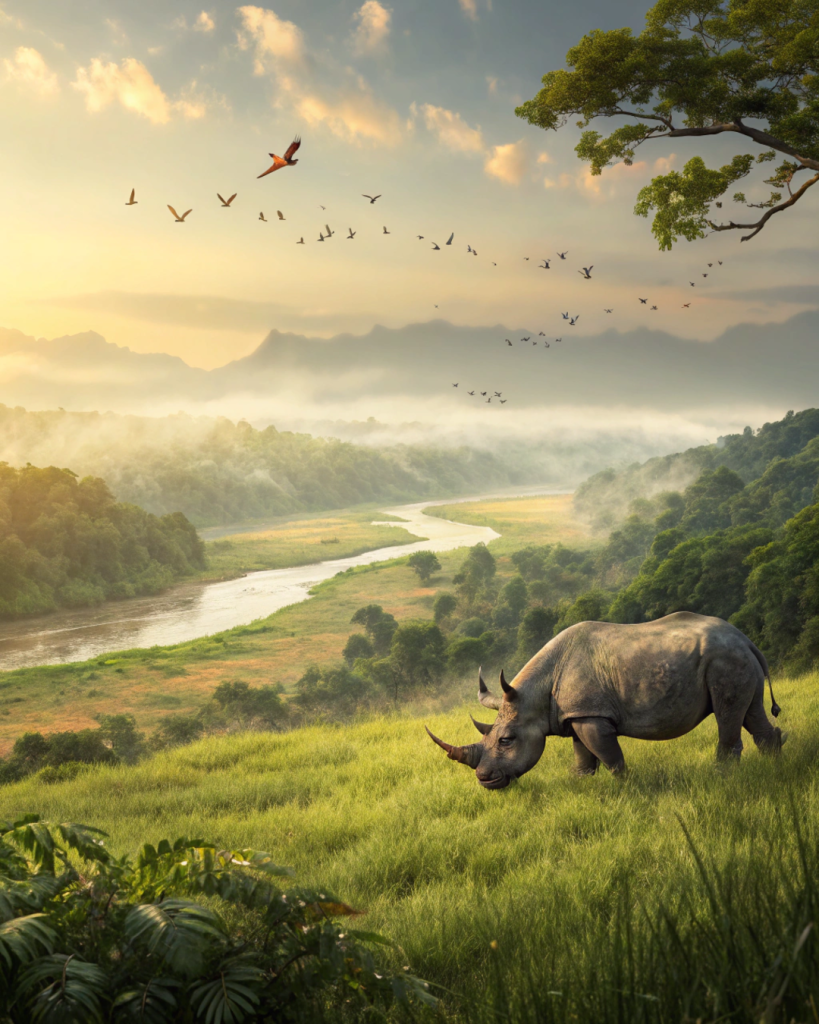
A Safari in the Wild
Chitwan National Park is a paradise for wildlife lovers. Located in the subtropical lowlands of Nepal, this park is home to Bengal tigers, one-horned rhinoceroses, and countless bird species.
My most memorable moment here was spotting a rhino grazing peacefully by the river—a reminder of how precious and fragile nature is.
Essential Visitor Information
- When to Visit: October to March for pleasant weather and optimal wildlife sightings.
- Getting There: Fly or take a bus to Bharatpur, then drive to the park.
- Costs: Entry fee is NPR 2,000 (approx. $17) for foreigners.
- Where to Stay: Stay in Sauraha, a small town near the park, with options ranging from eco-lodges to luxury resorts.
- Must-See Places: Elephant Breeding Center, Tharu Cultural Museum, and the Rapti River.
- Food Recommendations: Try dal bhat (lentil soup with rice) and momo (dumplings).
- Local Tips: Opt for a jeep safari or a canoe ride for the best wildlife experiences.
4. Kaziranga National Park, India
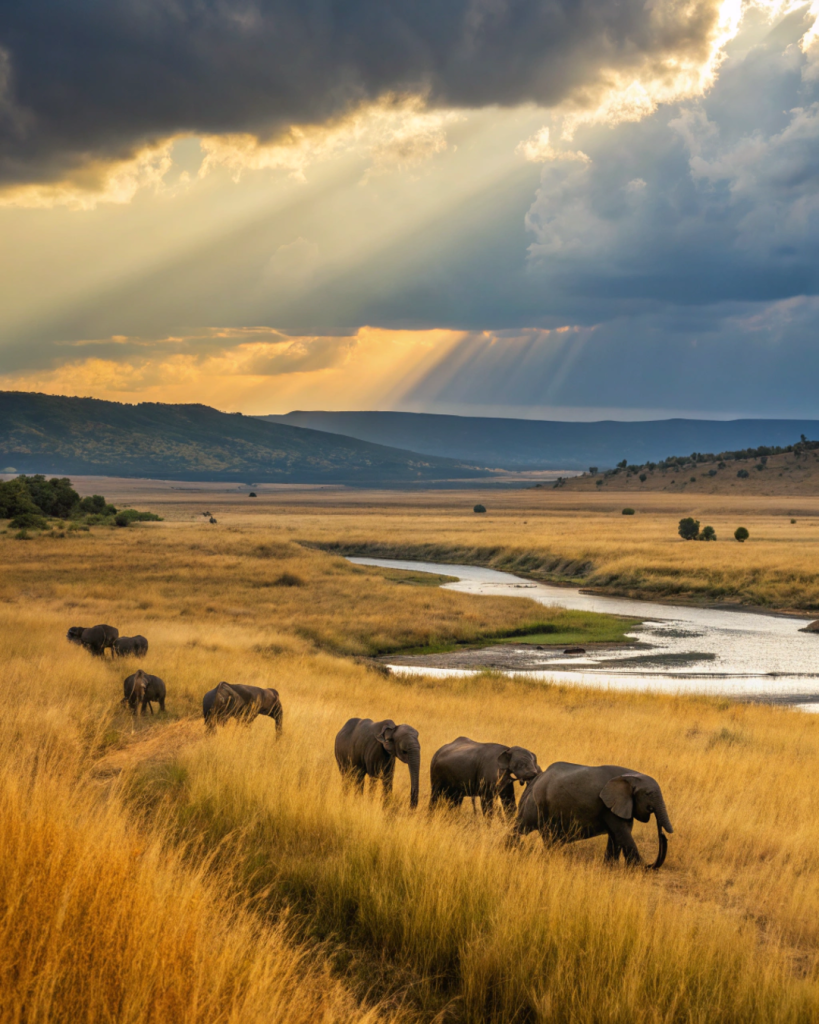
Land of the One-Horned Rhino
Kaziranga, located in the northeastern state of Assam, is a UNESCO World Heritage Site and a sanctuary for the endangered one-horned rhinoceros.
The park’s vast grasslands and wetlands are also home to tigers, elephants, and water buffalo. I was lucky enough to witness a herd of elephants crossing the road during my visit—a truly magical moment.
Essential Visitor Information
- When to Visit: November to April for pleasant weather and better wildlife sightings.
- Getting There: Fly to Jorhat or Guwahati, then drive to the park.
- Costs: Entry fee is INR 2,400 (approx. $30) for foreigners.
- Where to Stay: Stay in Kohora, the park’s main tourist hub, with options ranging from budget lodges to luxury resorts.
- Must-See Places: Central Range, Eastern Range, and the Brahmaputra River.
- Food Recommendations: Try Assamese thali, a traditional meal with rice, fish, and vegetables.
- Local Tips: Book your safari in advance, especially during peak season.
5. Taman Negara National Park, Malaysia
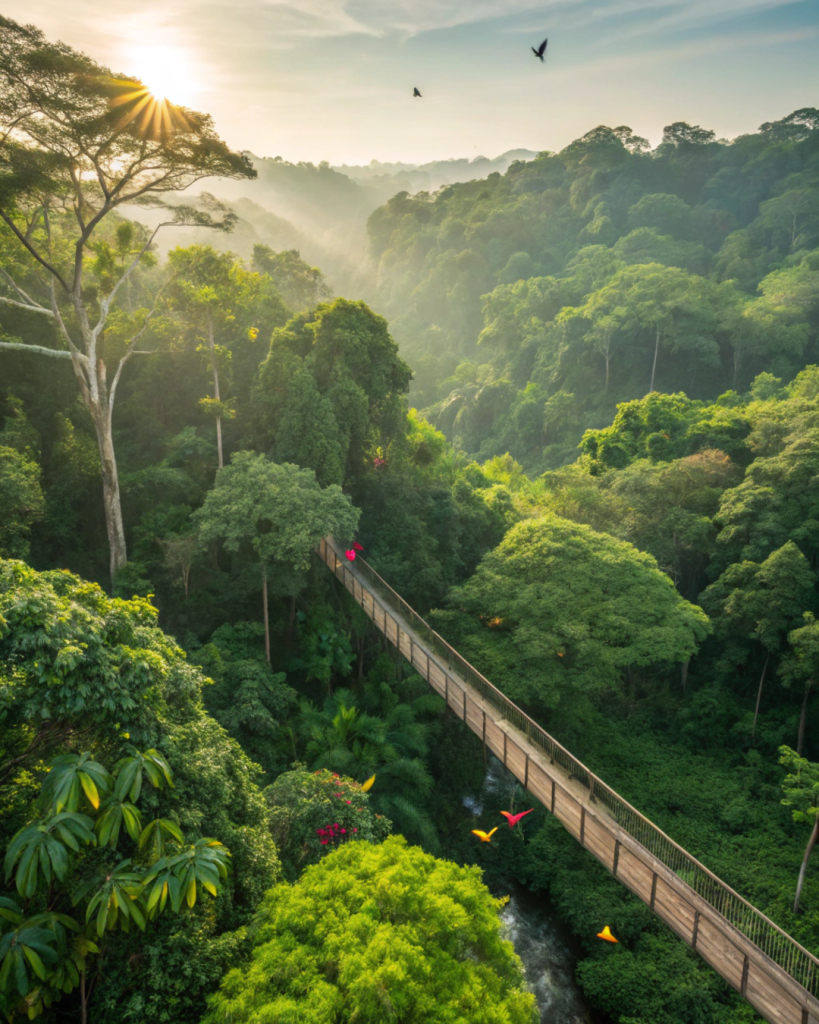
Into the Heart of the Rainforest
Taman Negara, one of the world’s oldest rainforests, is a lush, green wonderland. Walking across the canopy walkway, I felt like I was on top of the world, surrounded by towering trees and the sounds of nature.
This park is a must-visit for anyone who loves hiking, birdwatching, or simply being immersed in nature.
Essential Visitor Information
- When to Visit: February to September for dry weather and fewer mosquitoes.
- Getting There: Take a bus or drive to Kuala Tahan, the park’s main entrance.
- Costs: Entry fee is MYR 30 (approx. $7) for foreigners.
- Where to Stay: Kuala Tahan offers a range of accommodations, from budget hostels to riverside resorts.
- Must-See Places: Canopy Walkway, Lata Berkoh Rapids, and Gunung Tahan (Malaysia’s highest peak).
- Food Recommendations: Try ikan bakar (grilled fish) and nasi lemak (coconut rice).
- Local Tips: Bring insect repellent and wear lightweight, long-sleeved clothing.
6. Sagarmatha National Park, Nepal
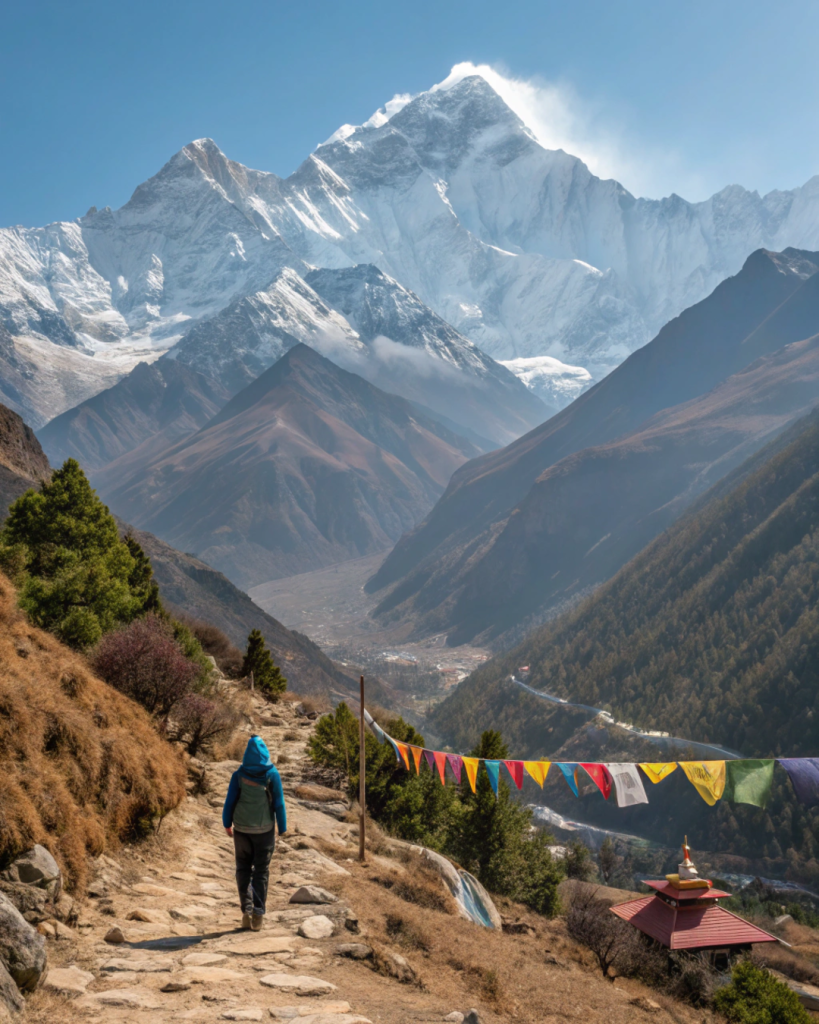
Where the Himalayas Touch the Sky
Standing at the base of Mount Everest in Sagarmatha National Park is a humbling experience. The sheer scale of the Himalayas is overwhelming, and the park’s rugged beauty is unmatched.
During my trek to Everest Base Camp, I was struck by the resilience of the Sherpa people and the stark, otherworldly landscapes.
Essential Visitor Information
- When to Visit: March to May and September to November for clear skies and moderate temperatures.
- Getting There: Fly to Lukla from Kathmandu, then trek to the park.
- Costs: Entry fee is NPR 3,000 (approx. $25) for foreigners.
- Where to Stay: Teahouses along the trekking routes offer basic accommodations.
- Must-See Places: Everest Base Camp, Namche Bazaar, and Tengboche Monastery.
- Food Recommendations: Try Sherpa stew and Tibetan bread at local teahouses.
- Local Tips: Acclimatize properly to avoid altitude sickness, and hire a local guide for safety.
7. Fuji-Hakone-Izu National Park, Japan
A Symphony of Nature and Culture
Fuji-Hakone-Izu National Park is a perfect blend of natural beauty and cultural heritage. The iconic Mount Fuji is the star of the show, but the park also boasts hot springs, lakes, and coastal scenery.
I’ll never forget soaking in an onsen (hot spring) while gazing at Mount Fuji—it was pure bliss.
Essential Visitor Information
- When to Visit: Late spring (April to June) and autumn (September to November) for pleasant weather and stunning views.
- Getting There: Take a train from Tokyo to Hakone or Fuji Five Lakes area.
- Costs: Entry to most areas is free, but attractions like the Hakone Ropeway cost around ¥1,500 (approx. $11).
- Where to Stay: Stay in Hakone or Kawaguchiko for easy access to the park. Options range from ryokans (traditional inns) to modern hotels.
- Must-See Places: Lake Ashi, Owakudani Valley, and the Izu Peninsula.
- Food Recommendations: Try kaiseki (multi-course meal) at a ryokan and black eggs boiled in sulfur springs at Owakudani.
- Local Tips: Use the Hakone Free Pass for unlimited travel on trains, buses, and boats in the area.
8. Kinabalu National Park, Malaysia
A Trekker’s Paradise
Kinabalu National Park, home to Mount Kinabalu (the highest peak in Southeast Asia), is a haven for hikers and nature enthusiasts. The climb to the summit was one of the most challenging yet rewarding experiences of my life.
Watching the sunrise from the peak, with the clouds below me, was nothing short of magical.
Essential Visitor Information
- When to Visit: February to April for dry weather and clear views.
- Getting There: Fly to Kota Kinabalu, then drive to the park (about 2 hours).
- Costs: Entry fee is MYR 15 (approx. $3.50) for foreigners, plus climbing permits and guide fees.
- Where to Stay: Stay in Kundasang, near the park, with options ranging from budget lodges to mountain resorts.
- Must-See Places: Mount Kinabalu Summit, Poring Hot Springs, and the Canopy Walkway.
- Food Recommendations: Try hinava (a local fish dish) and lihing (rice wine).
- Local Tips: Book your climb well in advance, as permits are limited.
9. Khao Yai National Park, Thailand
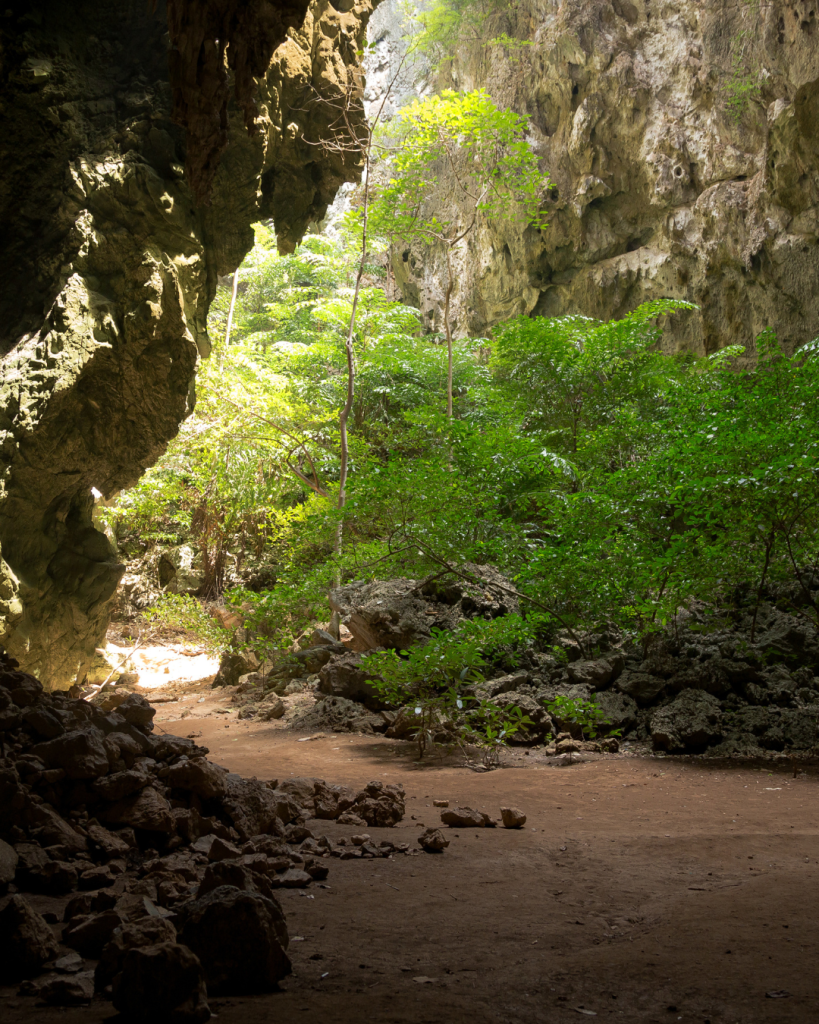
A Jungle Adventure
Khao Yai, Thailand’s oldest national park, is a lush jungle teeming with wildlife. During my visit, I was lucky enough to spot wild elephants, gibbons, and even a hornbill.
The park’s waterfalls and hiking trails make it a perfect escape from the hustle and bustle of city life.
Essential Visitor Information
- When to Visit: November to February for cool, dry weather.
- Getting There: Drive or take a bus from Bangkok (about 3 hours).
- Costs: Entry fee is THB 400 (approx. $12) for foreigners.
- Where to Stay: Stay in Pak Chong, a town near the park, with options ranging from budget guesthouses to luxury resorts.
- Must-See Places: Haew Narok Waterfall, Pha Kluai Mai Waterfall, and the wildlife observation towers.
- Food Recommendations: Try som tam (spicy papaya salad) and grilled chicken at local markets.
- Local Tips: Hire a local guide for night safaris to spot nocturnal animals.
10. Gunung Mulu National Park, Malaysia
A Hidden Gem in Borneo
Gunung Mulu National Park is a UNESCO World Heritage Site known for its dramatic limestone karsts, caves, and rainforests. Exploring the Deer Cave, one of the largest cave passages in the world, felt like stepping into another planet.
The park’s biodiversity is astounding, and its remote location adds to its allure.
Essential Visitor Information
- When to Visit: April to October for dry weather and easier access to caves.
- Getting There: Fly to Mulu from Miri or Kota Kinabalu.
- Costs: Entry fee is MYR 30 (approx. $7) for foreigners.
- Where to Stay: Stay at Mulu Marriott Resort or budget lodges near the park.
- Must-See Places: Deer Cave, Clearwater Cave, and the Pinnacles.
- Food Recommendations: Try local dishes like midin (jungle fern) and umai (raw fish salad).
- Local Tips: Wear sturdy shoes and bring a headlamp for cave exploration.
11. Jigme Dorji National Park, Bhutan
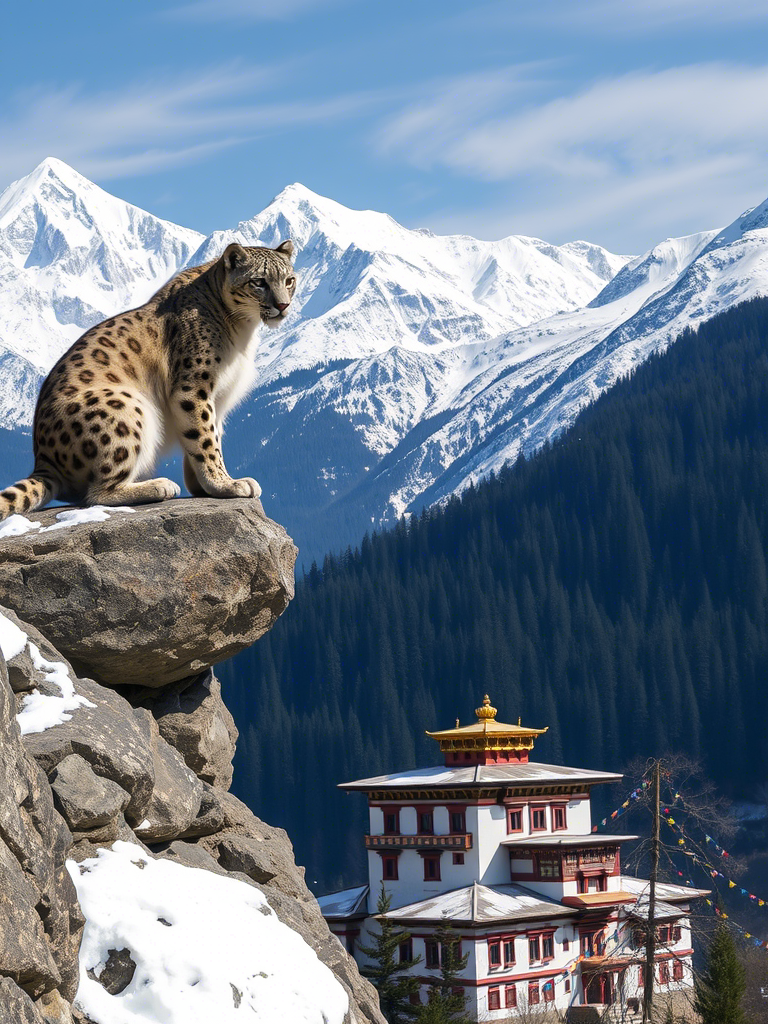
The Last Shangri-La
Jigme Dorji National Park, the largest protected area in Bhutan, is a land of pristine wilderness and cultural significance. During my visit, I was struck by the harmony between nature and the local communities.
The park is home to snow leopards, takins (Bhutan’s national animal), and ancient monasteries nestled in the mountains.
Essential Visitor Information
- When to Visit: March to May and September to November for clear skies and pleasant weather.
- Getting There: Fly to Paro, then drive to Thimphu and onward to the park.
- Costs: Entry fee is included in Bhutan’s daily tourist tariff (approx. 200−200−250 per day, covering accommodation, meals, and transport).
- Where to Stay: Stay in Thimphu or Punakha, with options ranging from boutique hotels to traditional guesthouses.
- Must-See Places: Tiger’s Nest Monastery (Paro Taktsang), Dochula Pass, and the Wangchuck Centennial Park.
- Food Recommendations: Try ema datshi (chili and cheese stew) and momo (dumplings).
- Local Tips: Respect local customs and dress modestly when visiting monasteries.
12. Kerinci Seblat National Park, Indonesia
Sumatra’s Wild Heart
Kerinci Seblat, the largest national park in Sumatra, is a haven for adventurers and wildlife enthusiasts. The park is home to the elusive Sumatran tiger, as well as the world’s largest flower, the Rafflesia.
Hiking to the summit of Mount Kerinci, the highest volcano in Indonesia, was one of the most challenging yet rewarding experiences of my travels.
Essential Visitor Information
- When to Visit: June to September for dry weather and better trekking conditions.
- Getting There: Fly to Padang or Jambi, then drive to the park.
- Costs: Entry fee is IDR 150,000 (approx. $10) for foreigners.
- Where to Stay: Stay in Kersik Tuo, a village near the park, with options ranging from homestays to guesthouses.
- Must-See Places: Mount Kerinci, Lake Gunung Tujuh, and the Rafflesia flower sites.
- Food Recommendations: Try rendang (spicy meat dish) and nasi padang (rice with assorted dishes).
- Local Tips: Hire a local guide for trekking and wildlife spotting.
Nearby Places to Visit
If you have extra time after exploring these incredible national parks, here are some nearby destinations worth adding to your itinerary:
- From Jiuzhaigou Valley: Visit Huanglong Scenic Area, known for its colorful pools and limestone formations.
- From Komodo National Park: Explore the beaches and dive sites of Flores Island.
- From Chitwan National Park: Head to Pokhara for stunning views of the Annapurna range.
- From Kaziranga National Park: Visit the tea gardens of Assam or the cultural hub of Guwahati.
- From Taman Negara: Explore the Cameron Highlands for cool weather and lush landscapes.
- From Sagarmatha National Park: Visit the ancient city of Bhaktapur or the bustling streets of Kathmandu.
- From Fuji-Hakone-Izu: Spend a few days in Tokyo for a mix of modernity and tradition.
- From Kinabalu National Park: Relax on the beaches of Kota Kinabalu or explore the islands of Tunku Abdul Rahman Marine Park.
- From Khao Yai: Visit Ayutthaya for its historical temples and ruins.
- From Gunung Mulu: Explore the vibrant city of Kuching or the rainforests of Bako National Park.
- From Jigme Dorji National Park: Visit the Punakha Dzong or the Phobjikha Valley.
- From Kerinci Seblat: Explore the cultural city of Padang or the beaches of the Mentawai Islands.
Asia’s national parks are more than just destinations—they are gateways to unforgettable experiences. Whether you’re trekking through the Himalayas, diving in the crystal-clear waters of Komodo, or marveling at the turquoise lakes of Jiuzhaigou, these parks will leave you with memories to last a lifetime.
As you plan your trip, remember to respect the environment and local cultures. Travel responsibly, and you’ll not only have an amazing adventure but also contribute to the preservation of these natural wonders for future generations.

